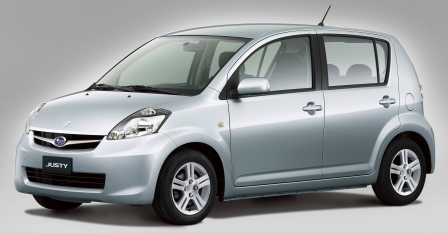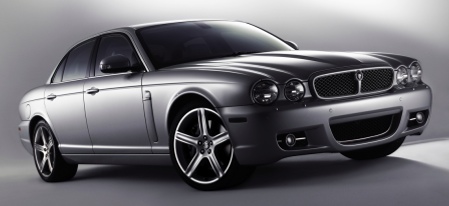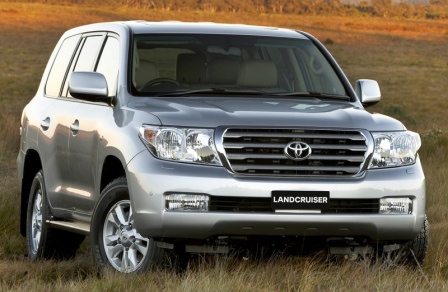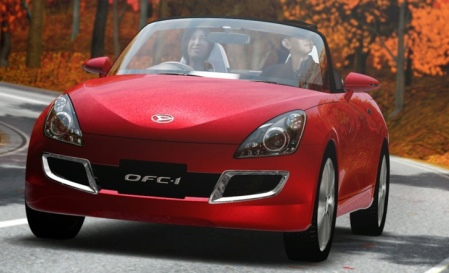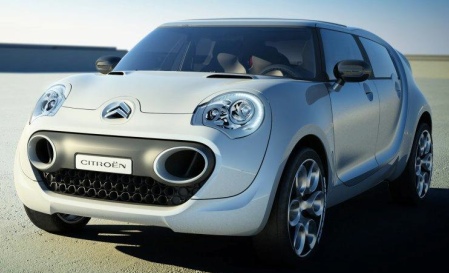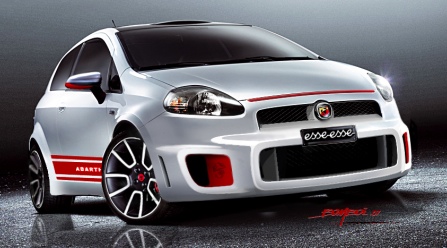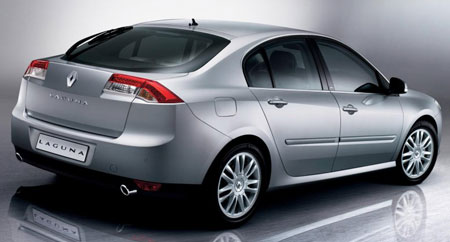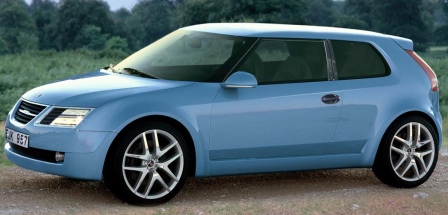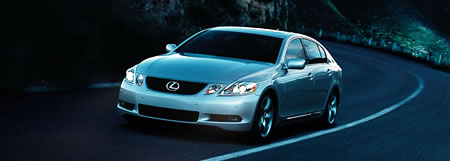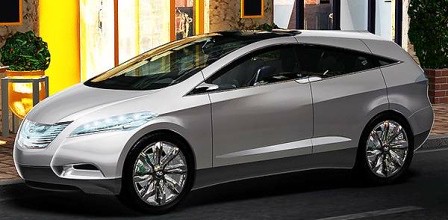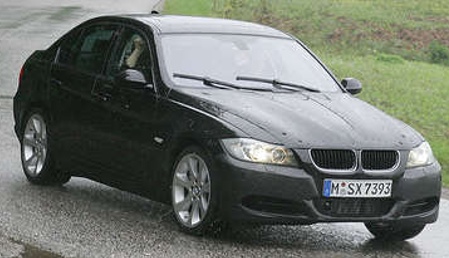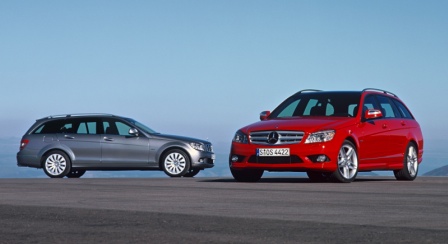Friday, September 21, 2007
Subaru Justy joins the rebadged Daihatsu Boon clan
This is because the Justy uses the 1KR-FE 1.0 liter engine from the Passo, Boon and Aygo instead of our Myvi’s EJ-VE. This engine is mated to a 5-speed manual transmission with no automatic option currently. Two trim levels are available - the “sporty” 1.0S and the basic 1.0E, which to me actually look very similiar other than the wheels put on the car. The 1.0S gets 14 inch aluminium alloy wheels with 175/65/R14 tyres while the 1.0E gets 13 inch steel wheels with full wheel caps wrapped with 155/80R13 tyres. On the inside, the 1.0S gets more airbags then the 1.0E - 6 versus 4, with the additional 2 being curtain airbags for the front and rear on both sides. Other 1.0S exclusive options are a chrome accented gear knob and a manual seat lifter for the driver’s seat. Safety features include usual ABS and EBD for both models.
Posted by
machines777
at
4:26 PM
0
comments
![]()
2008 Jaguar XJ
While the mid-sized Jaguar S-Type gets an all-new replacement in the form of the sleek new Jaguar XF (E-Class and 5-Series competitor), the full-sized Jaguar XJ gets a refreshed look for the 2008 model year and it will be in SISMA Auto showrooms in Malaysia by the end of September 2007.
This new 2008 facelifted Jaguar XJ recently won the annual Design Award ‘Autonis’ in the luxury category of the German car magazine Auto Motor und Sport, ahead of German competitors BMW, Mercedes and Audi. The winner was decided by roughly 16,000 readers of Auto Motor und Sport who took part in in voting for the winner.
The XJ continues to use it’s all-aluminium body construction. The aluminium body is said to have reduced the XJ’s weight by 40%. The new front bumper has revised upper and lower mesh grilles with chromed detailing. Behind the front wheels, two power vents match those introduced on the beautiful new XK sports car. The wing mirrors now have integrated signal indicator lights. The rear end has also been reworked with a newly reshaped bumper, subtle aero spoiler and revised tailpipe finishers.
The new Jaguar XJ will be sold from RM648,888, which is just about the price range for a full-sized car here - think S-Class, LS460 and 7-Series. Full model range and pricing details to be revealed later when the car is launched.
Posted by
machines777
at
4:25 PM
0
comments
![]()
New Toyota Landcruiser to make Sydney 2007 debut
Posted by
machines777
at
4:24 PM
0
comments
![]()
Daihatsu OFC-1 Concept Car
Posted by
machines777
at
4:19 PM
0
comments
![]()
Lexus IS250
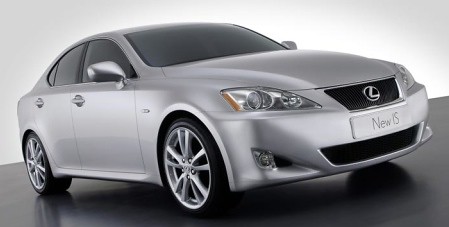
UMW Toyota’s luxury division Lexus Malaysia will be launching it’s fourth model today, the Lexus IS250. The IS250 will go against the BMW 325i and the Mercedes Benz C230 (or whatever it’s equivalent is in Malaysia for the W204), and is expected to account for a third of Lexus Malaysia’s projected sales of 300 units in 2008.
In overseas markets, the Lexus IS250 uses the 4GR-FSE, something that some of you might already be familiar with as it is the same engine in the 2.5 liter version of Naza’s Toyota Mark X. The 2.5 liter V6 engine makes 205 horsepower at 6,400rpm and up to 265Nm of torque at 4,800rpm, rather impressive torque figures for a 2.5 liter engine as usually you only get 100Nm of torque per liter of displacement for a normally aspirated engine. This might not be the exact state of tune that we’ll get in our Malaysian market, so more details will be posted here once Lexus Malaysia’s website is updated.
Expected price is about RM300k, which puts it somewhere at a premium over the normal 325i, but slightly cheaper than the 325i M Sport. Exact price to be posted here later.
UPDATE: Here’s the official deal on the car: RM313,166.20 on the road inclusive of insurance gets you a Lexus IS250 with a 2.5 liter V6 4GR-FSE engine complete with D4 direct injection producing 205 horsepower at 6,400 rpm and 252Nm of torque at 4,800 rpm. This is mated to a 6-speed automatic transmission with sequential shifting and steering wheel-mounted paddle shifters. Equipment includes HID headlamps, vehicle stability control, adaptive front-lighting, rain-sensing wipers, anti-glare rear view and wing mirrors, and of course the Lexus trademark here in Malaysia - an awesome Mark Levinson sound system with 14 speakers.
Posted by
machines777
at
4:17 PM
0
comments
![]()
2008 Mazda 6 Details and Specifications
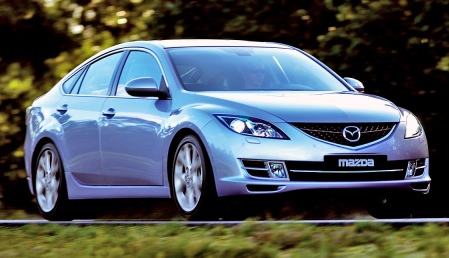
The new second generation Mazda 6 was displayed at the 2007 Frankfurt Motor Show, and is now larger yet more aerodynamic than it’s predecessor that pioneered Mazda’s new Zoom-Zoom philosophy, with over 440,000 units registered in Europe so far.
The new Mazda 6 is 65mm longer, 15mm wider, 5mm taller and 50mm longer wheelbase than the first generation model. It debuts with a four engine line-up: a 120hp 1.8 liter petrol, a 147hp 2.0 liter petrol, a 170hp 2.5 liter petrol and finally a 2.0 liter turbodiesel making 140hp. The new 2.5 liter unit has been developed from the first generation’s 2.3 liter unit, with a bigger bore and longer stroke contributing to it’s increased displacement. Intake and exhaust ports have also been redesigned to be more free-flowing. Mazda engineers also focused on reducing vibration and noise levels via the use of a dual-mass damper and a flexible flywheel. Piston and conrod weight has also been reduced.
Despite being larger and slightly bulkier-looking than the previous generation, the new Mazda 6 is more aerodynamic than it’s predecessor with a drag coefficient of 0.27Cd compared to 0.30Cd for the sedan and liftback, and 0.28Cd down from 0.32Cd for the estate body variant. The steering rack uses an electric power steering with a brushless motor, improving fuel economy by approximately 2% compared to a conventional hydraulic power steering setup used by the first generation Mazda 6.
Other than the obvious new interior design, there are a few improvements in interior aesthetics. The steering wheel angle is now set at 21 degrees which is a more upright position compared to the previous model. Little things like this enhance a driver’s sense of unity with the vehicle. An advanced welcome mode turns on the panel lights in order of precedence, from lower to upper, giving the driver the impression that the car is waking up and getting ready to go. The front center armrest has an adjustable front-back mechanism to suit the driver’s elbow position.
Posted by
machines777
at
4:14 PM
0
comments
![]()
Tuesday, September 4, 2007
Toyota looking to develop recharging points for plug-in hybrids
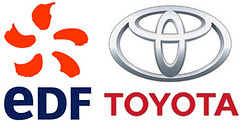
There's been no shortage of news surrounding Toyota and its hybrid plans of late, so it makes perfect sense to hear that the automaker may be on the verge of inking a deal to "develop recharging points for plug-in hybrid electric cars." Reportedly, Toyota and Electricite de France are set to "announce a deal next week to develop electricity infrastructure for the plug-in cars Toyota plans to launch in a few years." Notably, the agreement is only expected to cover France initially, but neighboring countries could be pursued shortly thereafter.
Posted by
machines777
at
2:17 PM
0
comments
![]()
Citroen C-Cactus Concept
This strange concept car is not as strange as it’s name - the Citroen C-Cactus Concept. It’s powered by a Hybrid HDi powertrain - that’s a PSA Peugeot Citroen technology that uses a 70hp HDi diesel engine with DPFS mated to a 30hp electric motor installed in the clutch housing. The hybrid system also has a Zero Emissions Vehicle mode that runs on the electric motor only.
The Citroen C-Cactus Concept is built on the Citroen C4’s platform. It was built according to the following values - essential, intelligent and ecologically aware. It only weighs 1,306kg which is not too heavy by today’s standards, but what’s interesting is the way Citroen engineers built it.
Posted by
machines777
at
2:16 PM
0
comments
![]()
Fiat Grande Punto Abarth SS
Fiat will be showing off it’s Fiat Grande Punto Abarth “esse-esse” (Super Sport, or SS) prototype at the 2007 Frankfurt Motor Show. The SS tuning kit boosts power of the basic Abarth up to 180 horsepower, up from the stock 150 horsepower that the Abarth’s turbocharged 1.4 liter engine makes.
Other enhancements include a lower stance and more powerful brakes, plus it will have SS badging around the car.
Posted by
machines777
at
2:14 PM
0
comments
![]()
Renaultsport Laguna III a possibility
The question is which engine would we use, and do we have enough customers who would want the car. We will see with the launch of the standard Laguna and the Coupe at the end of next year. But I would like it,” says Patrice Ratti, programmer director for Renault’s larger cars.
The upcoming yet to be launched coupe version of the Renault Laguna III will also get a new system called Active Drive that will give the car four-wheel steering capabilities. It will first debut on the coupe when it is launched in late 2008, but will eventually be available on the Laguna III sedan and estate later.
Posted by
machines777
at
2:13 PM
0
comments
![]()
Saab plans new small car for the next decade
Once again word has surfaced on a small Saab to be positioned under the Saab 9-3 sedan. Saab’s last attempt at a sub-9-3 car was the Saab 9-2X or more fondly known as the “Saabaru”, which was a rebadge of the Subaru Impreza station wagon. Saab only sold that for 2 years - 2005 and 2006. Saab wants to try again.
“It might be the most dramatically styled. The idea is to have an iconic shape. It wouldn’t be a toy. This is not a two-seat exotic roadster. It would have a level of functionality. It could be a hatchback. We don’t know yet,” says Steve Shannon, Saab’s general manager in the US. He further added that the new small Saab would target active 20 to 30 year olds. A target release date is sometime in the next decade.
Early 2006, there was word of a Saab 9-1, a small car to take on the likes of the BMW 1-Series and the Audi A3. The Saab 9-1 was to be based on the upcoming GM Delta II platform, which will also underpin new cars like the Chevrolet Volt. You will find an artist’s impression of the new small Saab at the beginning of this post.
Posted by
machines777
at
2:12 PM
0
comments
![]()
Monday, September 3, 2007
Lexus GS-F to debut with next generation GS
Posted by
machines777
at
6:27 PM
0
comments
![]()
Sunday, September 2, 2007
Hydrogen-powered Hyundai i-Blue Concept
Posted by
machines777
at
4:33 PM
0
comments
![]()
Facelifted E90 BMW 3-Series Sedan Spotted
Posted by
machines777
at
4:32 PM
0
comments
![]()
W204 Mercedes Benz C-Class Estate Unveiled
The second body variant of the new W204 C-Class has been unveiled by the boys of Stuttgart ahead of the Frankfurt Motor Show this month - the Mercedes Benz C-Class Estate. Like most bread and butter Mercedes Benz cars, it comes in three trim levels - Classic, Elegant and Avantgarde.
The estate rear end allows for a variable boot capacity of 485 liters with the rear seats up extendable to a large 1500 liters when the split-folding rear seats are down, an increase of 146 liters over the previous generation C-Class Estate. The largest possible cuboid item volume that can fit in the boot now is 827 litres, an increase of 66 litres compared to the previous generation. Two bag hooks and four anchor rings are included in the boot as standard. Mercedes Benz has equipped with the C-Class Estate with what it calls an EASY-PACK tailgate which opens and closes at the push of a button.
Posted by
machines777
at
4:30 PM
0
comments
![]()
